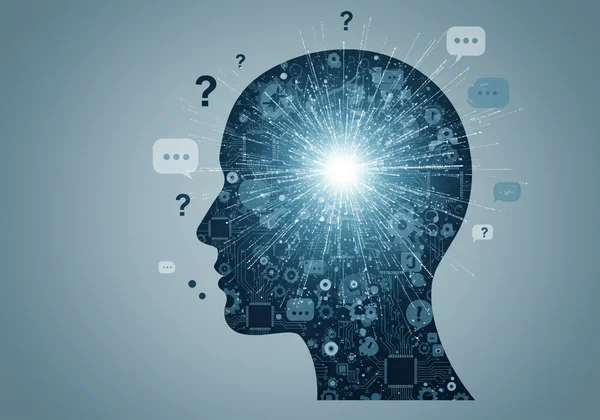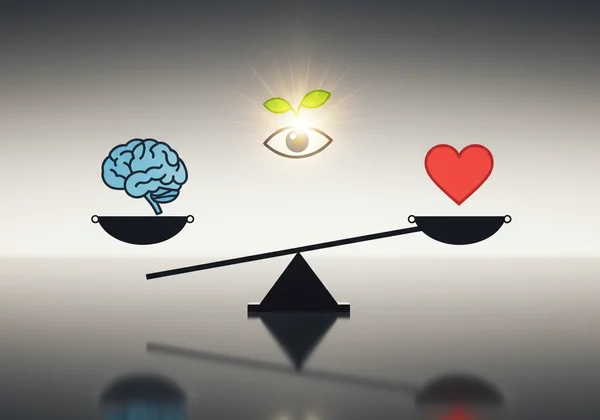Empathy Test Types Explained: Cognitive vs. Emotional Empathy
Have you ever felt you understood exactly what someone was thinking, but couldn't quite feel their joy or sorrow? Or perhaps you've been so swept up in a friend's sadness that it felt like your own, even if you didn't fully grasp the details of their situation? This highlights a crucial distinction in the world of human connection: the difference between cognitive empathy and emotional empathy. Many people think of empathy as a single ability, but it's actually a multi-faceted skill. How do I know if I'm empathetic in different ways?
Understanding these two core types of empathy is the first step toward greater self-awareness and building stronger, more meaningful relationships. It's about discovering your unique emotional and intellectual blueprint for connection. The most effective way to begin this journey is to gain a clear picture of your own tendencies. You can discover your profile by taking a comprehensive assessment designed to explore these very facets.

What is Empathy? Defining the Core Concept
Before we dive into the different types, let's establish a clear empathy definition. At its heart, empathy is the capacity to understand or feel what another person is experiencing from within their frame of reference. It’s the ability to place yourself in someone else's position, and it is a cornerstone of emotional intelligence.
More Than Just Feeling: A Broad Look at Empathy
Empathy is more than just pity or sympathy. Sympathy is feeling sorry for someone, while empathy is about feeling with them. It involves setting aside your own perspective to see the world through another's eyes. This powerful ability is fundamental to creating deep and authentic interpersonal connections, fostering cooperation, and resolving conflict in all areas of life. It’s a skill that can be learned and developed over time.
Why Empathy Matters: Impact on Relationships & Self-Awareness
Why is understanding empathy so important? In our personal lives, it allows us to build trust and intimacy with partners, family, and friends. Professionally, it’s a superpower. Empathetic leaders create more engaged teams, salespeople build better client relationships, and healthcare professionals provide more compassionate care. Cultivating empathy is directly linked to enhancing your self-awareness, helping you recognize your own emotional patterns and how you impact others.
Unpacking Cognitive Empathy: The Mind's Approach
Cognitive empathy is the "thinking" part of empathy. It’s the ability to logically understand another person's emotional state and the thoughts behind it without necessarily sharing the emotion yourself. It's about intellectually grasping what someone is feeling and why.
How Cognitive Empathy Works: Understanding Perspectives
Think of cognitive empathy as skilled perspective-taking. It's like being a detective of the mind, picking up on verbal and non-verbal cues to build a mental model of someone else's inner world. You can understand their reasoning, predict their reactions, and see a situation from their point of view. This skill doesn't require an emotional connection, but rather an intellectual one.

When Cognitive Empathy Excels: Practical Applications
This form of empathy shines in professional and strategic settings. A manager using cognitive empathy can understand why a team member is struggling with a project and offer practical solutions. A negotiator can anticipate the other party's moves and find common ground. It allows for clear-headed decision-making in emotionally charged situations, making it an invaluable tool for leaders, therapists, and anyone in a client-facing role.
The Pitfalls of Cognitive Empathy Alone
While powerful, cognitive empathy without its emotional counterpart can have a dark side. When used without genuine care, it can become a tool for manipulation. A con artist or a "dark empath" might use their sharp understanding of others' feelings to exploit them. This highlights why a balance between understanding and feeling is so crucial for authentic connection. If you're curious about your balance, an empathy scale online can provide initial insights.
Exploring Emotional Empathy: Feeling What Others Feel
In contrast, emotional empathy is the "feeling" component. It’s when you physically feel another person's emotions as if they were your own. When a friend is excited about good news, you feel a surge of joy; when you see someone cry, you feel a pang of sadness.
The Power of Emotional Resonance: Vicarious Experience
This is the most visceral form of empathy, often referred to as emotional resonance. Our brains have "mirror neurons" that are thought to fire in the same way whether we are performing an action or watching someone else perform it. Emotional empathy works similarly, allowing you to have a vicarious experience of another person's feelings. It's an automatic, often unconscious, response that creates an immediate bond.

Advantages of Emotional Empathy in Connection
Emotional empathy is the glue that holds close relationships together. It forges powerful bonds of trust and intimacy, making people feel truly seen and heard. Parents rely on it to connect with their children, and it's essential for creating deep, lasting friendships. This ability to share in others' joy and pain is what makes us feel like we are part of a community.
Challenges of High Emotional Empathy: Empathic Distress
The downside of high emotional empathy is the risk of empathic distress or burnout. If you constantly absorb the negative emotions of those around you without a way to manage them, it can become overwhelming and emotionally draining. Individuals who identify as "empaths" often struggle with setting boundaries to protect their own well-being. Learning your score on an am I an empath test can be the first step to managing this trait.
The Dynamic Duo: How Cognitive & Emotional Empathy Work Together
Neither type of empathy is inherently "better" than the other. True, well-rounded empathy—often called compassionate empathy—arises from the powerful combination of both. You need cognitive empathy to understand the situation and emotional empathy to feel the appropriate response.
Balancing Both for Holistic Empathy
The ideal is a dynamic balance. With holistic empathy, you can understand a colleague's stress (cognitive) and feel compassion for their struggle (emotional), leading you to offer both practical help and a kind word. This blend allows you to connect deeply without becoming overwhelmed and to offer support that is both intelligent and heartfelt. Are you more of a thinker or a feeler? A well-designed free empathy test can help you find out.
Real-World Scenarios: Empathy in Action
Imagine a nurse treating a nervous patient.
- Cognitive Empathy: The nurse understands the patient is scared of needles because of a past negative experience. She can explain the procedure calmly and logically to ease their specific fears.
- Emotional Empathy: The nurse feels a sense of the patient's anxiety, which prompts her to speak in a softer tone, offer a reassuring touch, and show genuine care. Together, these actions make the patient feel safe and understood, demonstrating perfect empathy in action.
Your Next Step in Empathy Awareness
Understanding the distinction between cognitive and emotional empathy unlocks a new level of self-knowledge. It helps you identify your natural strengths and areas for growth, whether you're looking to become a better leader, a more supportive partner, or simply more in tune with yourself. Recognizing your unique blend is the key to harnessing your empathy effectively.
Are you ready to stop guessing and start knowing? Unlocking deeper self-awareness and emotional intelligence is within reach. Take our comprehensive empathy test now to receive your personalized score. You can choose a free summary report or unlock a deeply insightful, AI-powered analysis to guide your personal growth.

Common Questions About Empathy Types
What are the primary differences between cognitive and emotional empathy?
The main difference is "thinking" vs. "feeling." Cognitive empathy is the intellectual ability to understand someone's perspective and emotional state. Emotional empathy is the ability to actually feel or share in another person's emotions. One is a mental skill, the other an emotional experience.
Can someone have one type of empathy without the other?
Yes, it's quite common for people to have an imbalance. Some individuals are highly skilled at understanding others (high cognitive) but feel emotionally detached. Others may be easily swept up in emotions (high emotional) but struggle to understand the context. A balanced profile is something many people work towards.
Is one type of empathy "better" than the other?
Neither is inherently better; they are simply different tools for different situations. Cognitive empathy is excellent for problem-solving and strategic thinking. Emotional empathy is essential for building close bonds and offering comfort. The most effective form of empathy, compassionate empathy, integrates both.
How can understanding these empathy types help me in daily life?
Knowing your natural tendencies can transform your interactions. If you're strong in cognitive empathy, you can focus on intentionally connecting with your feelings to build deeper relationships. If you're high in emotional empathy, you can learn to use cognitive skills to set boundaries and avoid burnout. This knowledge empowers you to navigate social situations more effectively.
How can I assess my own cognitive and emotional empathy?
While self-reflection is helpful, the most objective way is through a structured assessment rooted in psychological principles. An online empathy test can provide you with a detailed breakdown of your unique empathy profile, highlighting your strengths in both cognitive and emotional domains and offering actionable insights for growth.